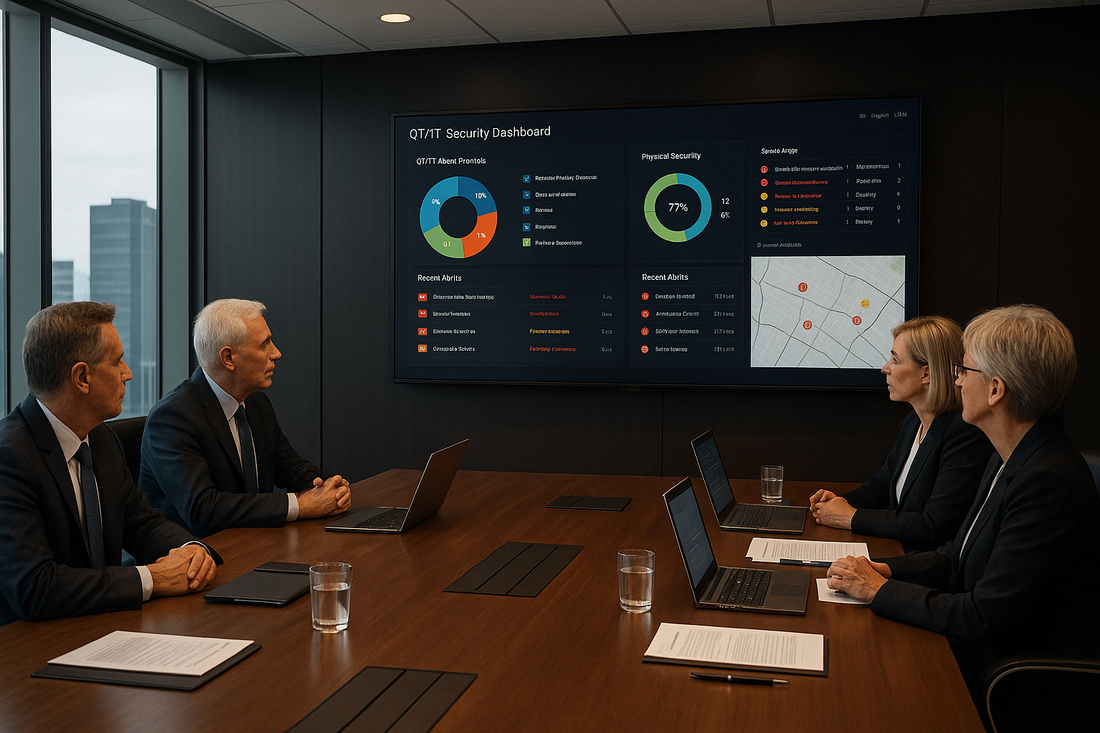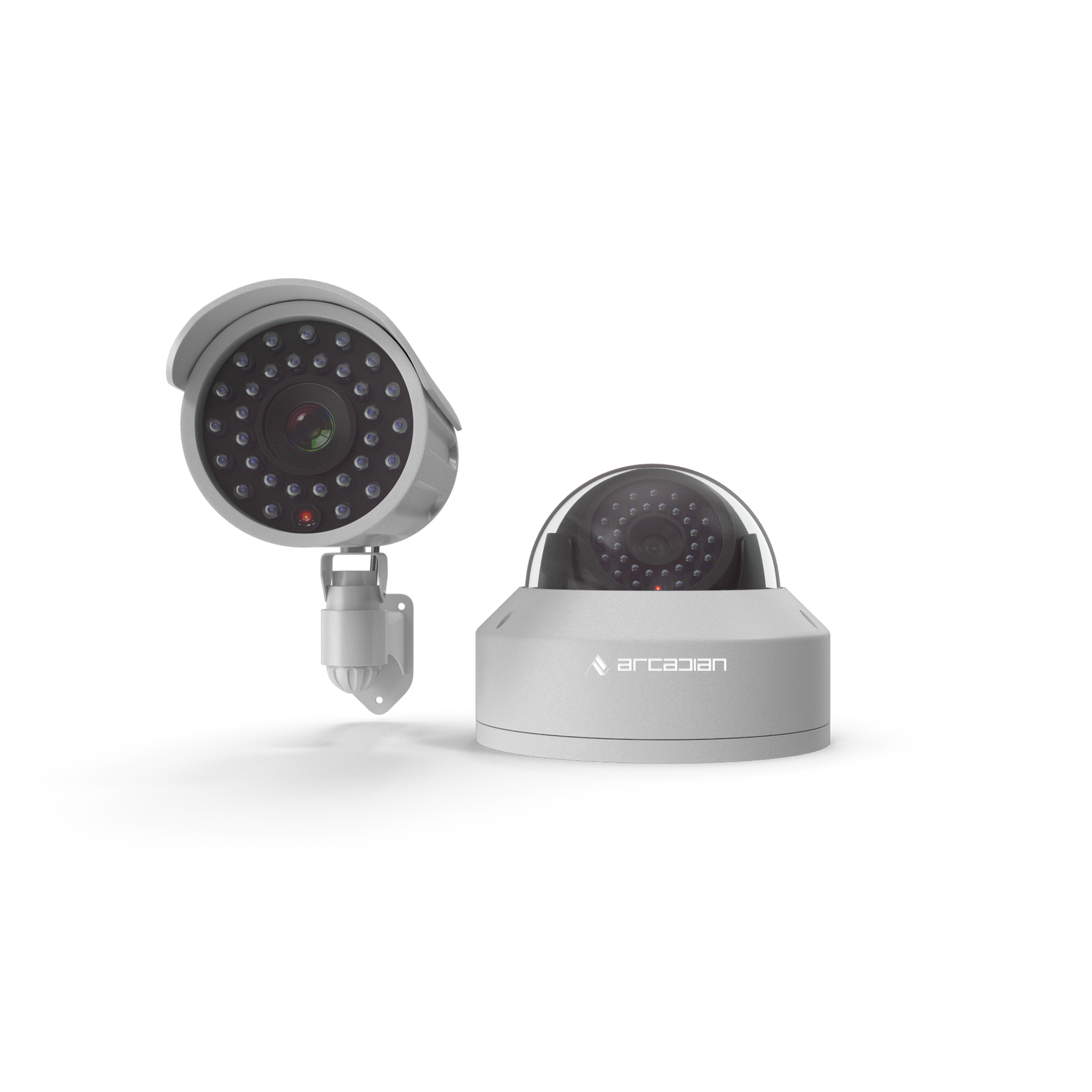Why Executives Who Ignore Unified OT Security Taxonomies Will Fail in 2025
Executives who dismiss unified OT security taxonomies are betting on outdated silos. The future belongs to leaders who embrace convergence—before competitors and regulators make the decision for them.

Introduction
If you’re an executive who thinks a unified OT security taxonomy is “too technical to matter,” you’ve already lost control of your security operations. That’s not an opinion—it’s a reality emerging in 2025.
In August, CISA and five allied nations introduced the first global operational technology (OT) security taxonomy. It’s not a suggestion. It’s the new language for how cyber and physical security must interoperate. Ignore it, and you’ll soon discover your compliance, budgets, and even your relevance as a leader are on the line.
Competitors like Verkada, Genetec, Milestone, and Eagle Eye Networks don’t want you to understand this shift. They thrive on vendor lock-in and siloed systems. But ArcadianAI, with its AI assistant Ranger, is built for the opposite: camera-agnostic, cloud-native, taxonomy-ready convergence.
This post will challenge everything you think you know about physical security. If you still believe cameras, alarms, and access systems are “separate” from IT, you’re not leading a security program—you’re babysitting outdated infrastructure.
Quick Summary / Key Takeaways
-
Ignoring taxonomy = compliance risk, wasted budgets, and career liability.
-
Competitors adopting taxonomy will outpace you in resilience and ROI.
-
Physical and cyber security convergence is now policy-driven, not optional.
-
ArcadianAI Ranger delivers taxonomy-aligned alerts and camera-agnostic integration.
Background & Relevance
Why does this matter in 2025?
-
In 2024, U.S. utilities reported 2,800+ incidents of vandalism, sabotage, and gunfire attacks on critical infrastructure (Dataminr). Many involved both physical breaches and cyber exploits.
-
The 2025 State of Physical Security Report found that 57% of organizations still rely on outdated, siloed systems—creating blind spots exploited by attackers.
-
CISA’s new guidance explicitly links OT taxonomy to asset inventory, risk management, and regulatory compliance.
If you think this is optional, ask yourself: when the auditors show up, will your camera fleet, access control systems, and intrusion devices be classified properly—or will they look like untagged liabilities?
Executives who wait will not only face higher costs but will watch as CIOs and CISOs absorb physical security budgets—because they understand taxonomy and convergence better than you do.
Core Exploration
1. Physical Security Isn’t Physical Anymore—Stop Pretending It Is
If your mindset is “physical security is separate from IT,” you’re running a 1990s playbook in 2025.
Every camera is an IoT device. Every badge reader is a network endpoint. Every door controller is an OT asset. Regulators now treat them as such. Pretending otherwise isn’t leadership—it’s negligence.
Executives who cling to outdated silos will soon find themselves explaining to boards why a camera outage wasn’t linked to the ransomware event that crippled operations.
2. Your Vendor Lock-In Strategy Is Costing You Millions
Legacy vendors (Verkada, Milestone, Genetec, Eagle Eye) profit when you believe your only option is to live inside their walled gardens. Their proprietary naming conventions make it nearly impossible to integrate systems without massive cost.
A unified taxonomy flips that script. Suddenly, a Hanwha camera, an Axis access panel, and ArcadianAI Ranger alerts can all map into the same classification framework.
Translation: you no longer need to buy everything from one vendor to achieve integration. Leaders who miss this will keep overspending while competitors enjoy lower total cost of ownership.
3. Compliance Isn’t Optional—It’s Career Insurance
Executives often treat compliance as an afterthought—until it costs them their job.
-
NDAA bans have already reshaped procurement.
-
TSA pipeline directives mandate cyber-physical alignment.
-
GDPR and state privacy laws now evaluate video surveillance under data protection rules.
Taxonomy isn’t just about technology. It’s about how auditors will score you. When a regulator asks, “Show us your OT asset inventory,” do you want to hand them a proprietary VMS log that no one understands? Or a taxonomy-aligned report generated automatically by Ranger?
Compliance is no longer paperwork. It’s career insurance.
4. AI Without Taxonomy Is Just Noise
Executives love to say “AI is the future.” But here’s the problem: most AI systems in security still produce garbage alerts that no board cares about.
Why? Because they lack classification. “Motion detected” means nothing to a CFO.
ArcadianAI Ranger fixes this by aligning alerts to taxonomy. Instead of noise, you get:
-
Asset: Perimeter Camera – OT Security Critical
-
Event: Unauthorized access attempt
-
Severity: Critical
-
Action: Ranger escalation initiated
That’s the kind of board-ready language executives can actually use to justify budget allocation and ROI.
5. If You Don’t Lead the Convergence, Someone Else Will
Here’s the harshest truth: if you, as a physical security leader, don’t embrace taxonomy, your CIO or CISO will take your budget.
They already speak the language of compliance, convergence, and classification. They know how to plug into SIEMs and SOC workflows.
Boards are increasingly asking one question: “Who owns cyber-physical risk?” If your answer is still “We handle cameras, IT handles firewalls,” you’re not the owner—you’re the liability.
Executives who resist taxonomy won’t just fall behind. They’ll be replaced.
Comparisons & Use Cases
Table: Old vs. New Leadership Mindset
| Old Executive Thinking | Unified Taxonomy Mindset |
|---|---|
| “Physical security is separate from IT” | “Security = cyber + physical convergence” |
| “We’ll buy from one vendor to keep it simple” | “We’ll use taxonomy to integrate best-of-breed solutions” |
| “Compliance is paperwork” | “Compliance is risk mitigation + career protection” |
| “AI is overhyped” | “AI with taxonomy is measurable ROI” |
Real-World Impact
-
Energy & Utilities: In 2024, coordinated attacks hit substations in North Carolina and Oregon. With taxonomy, a perimeter camera outage could have been linked immediately to cyber anomalies, preventing cascading downtime.
-
Retail (Walmart, Target, CVS, Home Depot): Organized retail crime now exceeds $112 billion annually (NRF 2025). Taxonomy allows classification of store-level alerts by asset criticality, giving executives data to justify security investments.
-
Airports: TSA now requires critical cameras (e.g., runway perimeters) to be tagged as OT assets. Taxonomy turns physical assets into compliance-aligned categories.
FAQ
Q1: Isn’t taxonomy just IT jargon?
No. Ignoring it is like ignoring accounting standards—you won’t last long in your role.
Q2: Won’t my existing VMS vendor handle it?
They won’t—because standardization breaks their business model.
Q3: Does taxonomy increase costs?
No. It reduces TCO by eliminating duplicated systems and vendor lock-in.
Q4: Can ArcadianAI map my existing cameras?
Yes. Ranger aligns alerts with taxonomy using your current hardware.
Q5: Who owns taxonomy adoption in my organization?
If you don’t claim it, your CIO or CISO will—and they’ll take your budget with it.
Conclusion & CTA
The unified OT security taxonomy is not optional. It’s the new foundation of cyber-physical convergence, compliance, and ROI.
Executives who ignore it will lose budgets, credibility, and relevance. Those who embrace it will lead the next generation of resilient enterprises.
ArcadianAI Ranger is the only platform built for this moment: taxonomy-aligned, camera-agnostic, cloud-native, and compliance-ready.
Security Glossary (2025 Edition)
-
OT (Operational Technology) — Hardware/software controlling physical processes like cameras, controllers, PLCs.
-
Unified Security Taxonomy — Standard model for classifying cyber + physical security assets/events.
-
Convergence — Integration of cyber and physical security functions under one framework.
-
CISA (Cybersecurity and Infrastructure Security Agency) — U.S. federal body defining OT taxonomy.
-
NDAA (National Defense Authorization Act) — U.S. law banning certain Chinese surveillance vendors.
-
SOC (Security Operations Center) — Centralized security monitoring and response hub.
-
SIEM (Security Information and Event Management) — Tool correlating alerts from cyber and physical systems.
-
Compliance — Meeting legal/regulatory obligations (GDPR, TSA, NDAA, etc.).
-
VMS (Video Management System) — Software for recording/managing video from cameras.
-
VSaaS (Video Surveillance as a Service) — Cloud-based video storage and management.
-
AI Alerts — Automated notifications from AI like Ranger, mapped to taxonomy.
-
Critical Infrastructure — Essential systems like power grids, airports, pipelines.
-
Vendor Lock-In — Reliance on one vendor’s ecosystem, limiting flexibility.
-
TCO (Total Cost of Ownership) — Overall cost of system ownership, including OPEX/CAPEX.
-
ROI (Return on Investment) — Financial value of security investments.
-
False Alarms — Non-threat alerts that waste time, resources, and money.
-
Access Control — System governing facility entry/exit via credentials.
-
Incident Correlation — Linking events across cyber and physical logs.
-
Taxonomy-Aligned Report — Audit-ready classification of assets/events.
-
Cyber-Physical Security — Unified protection of digital + physical domains.
-
ArcadianAI Ranger — AI assistant providing taxonomy-aligned alerts across existing cameras.

Security is like insurance—until you need it, you don’t think about it.
But when something goes wrong? Break-ins, theft, liability claims—suddenly, it’s all you think about.
ArcadianAI upgrades your security to the AI era—no new hardware, no sky-high costs, just smart protection that works.
→ Stop security incidents before they happen
→ Cut security costs without cutting corners
→ Run your business without the worry
Because the best security isn’t reactive—it’s proactive.







